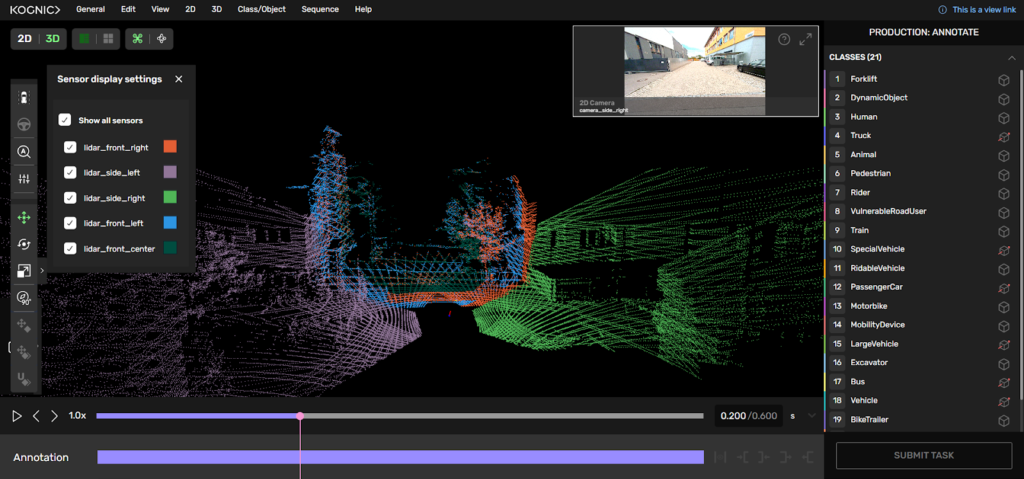Introduction
Kognic represents a transformative force in the realm of data analytics and business intelligence, offering organizations unparalleled insights into their data assets. This paragraph delves into the multifaceted capabilities of Kognic, exploring its key features, industry applications, and the value it brings to businesses seeking to harness the power of data-driven decision-making.
1. Introduction to Kognic: Kognic serves as a dynamic platform designed to empower businesses with actionable insights derived from data analytics. Through its advanced algorithms and intuitive interface, Kognic enables users to unlock the full potential of their data, driving strategic decision-making and fostering innovation across various sectors.
2. Key Features of Kognic
a. Data Integration and Management: Kognic excels in consolidating data from disparate sources into a centralized repository, streamlining data management processes and ensuring data consistency and integrity.
b. Advanced Analytics and Visualization: With robust analytics tools and visualization capabilities, Kognic enables users to uncover hidden patterns and trends within their data, facilitating informed decision-making and strategic planning.
c. Predictive Modeling and Forecasting: Kognic leverages predictive modeling techniques to anticipate future outcomes and trends, empowering organizations to proactively address challenges and capitalize on opportunities.
3. Industry Applications of Kognic
a. Retail and E-Commerce: In the retail sector, Kognic enables businesses to optimize pricing strategies, forecast demand, and personalize customer experiences, driving revenue growth and enhancing customer satisfaction.
b. Healthcare and Life Sciences: Kognic plays a crucial role in healthcare by facilitating clinical data analysis, population health management, and drug discovery efforts, ultimately improving patient outcomes and driving medical advancements.
c. Finance and Banking: Financial institutions leverage Kognic to analyze market trends, detect fraud, and optimize risk management strategies, enhancing operational efficiency and regulatory compliance.
4. Implementation Process
a. Assessment and Planning: The implementation of Kognic begins with a thorough assessment of the organization’s data infrastructure and analytical requirements, followed by the development of a comprehensive implementation plan.
b. Data Integration and Configuration: During this phase, Kognic experts work closely with the organization’s IT team to integrate the platform with existing systems and configure it to meet specific business needs, ensuring seamless data flow and optimal performance.
c. Training and Support: Upon deployment, Kognic provides comprehensive training sessions and ongoing support to users, ensuring they are equipped with the knowledge and tools necessary to leverage the platform effectively in their day-to-day operations.
5. Benefits of Using Kognic
a. Informed Decision-Making: Kognic empowers organizations to make data-driven decisions, enabling them to gain insights into market trends, customer behavior, and operational performance.
b. Operational Efficiency: By streamlining data management processes and automating analytical tasks, Kognic helps businesses improve operational efficiency, reduce costs, and drive productivity.
c. Competitive Advantage: Through its advanced analytics capabilities, Kognic gives businesses a competitive edge by enabling them to identify opportunities, mitigate risks, and innovate in their respective industries.
6. Future Outlook and Innovation: Kognic remains committed to innovation and continuous improvement, leveraging emerging technologies such as artificial intelligence and machine learning to enhance its capabilities and stay ahead of evolving market trends.
In response to AI businesses looking to accelerate their product development and ensure AI systems are trusted and safe, Kognic has launched The Alignment Platform, featuring an annotation engine that enables multi-sensor fusion, merging data from sensors such as radar, lidar and camera.
With intuitive interfaces for visualizing complex sequences, the new platform speeds AI product teams’ efforts to explore, shape and explain their data sets, Kognic says. In particular, the company highlights the solution’s fine-tuning capabilities, which provide significant efficiencies that are essential to gaining leverage on improving model performance for perception.
The company points to McKinsey’s latest research, which reveals that models and tools are the biggest challenge for high-performing AI businesses. In the near future, everything that moves will need autonomous solutions, including automotive, heavy manufacturing and robotics industries. Kognic says its AI Alignment Platform fills this critical gap in the market, defining, refining and validating large data sets to train machine learning models.
 “The future of positive, helpful and impactful AI will depend on aligning human and machine intent,” explained Daniel Langkilde, CEO and co-founder, Kognic. “As AI continues to develop at a rapid rate, the volume of data AI developers and businesses manage will explode. In order to manage these increasingly complex models more effectively, our customers need enterprise-grade tools to get the job done.”
“The future of positive, helpful and impactful AI will depend on aligning human and machine intent,” explained Daniel Langkilde, CEO and co-founder, Kognic. “As AI continues to develop at a rapid rate, the volume of data AI developers and businesses manage will explode. In order to manage these increasingly complex models more effectively, our customers need enterprise-grade tools to get the job done.”
“At Kognic, we are relentless in our pursuit of safety,” added Oscar Petersson, CFO and co-founder. “The most common reason AI products and projects fail is because of misaligned expectations. Without human feedback, AI will try to solve the ‘how’ on its own and may make mistakes in the process. That’s why it’s so crucial that we make it as easy as possible to give feedback to AI systems to ensure high-performance and trust. This is vital for safety-critical applications such as robotics and autonomous driving.”
 Daniel Jeffries, managing director of the AI Infrastructure Alliance, has welcomed the new platform: “The AI infrastructure landscape is evolving incredibly rapidly. Enterprises are facing increasing pressure to make sure their models and AI systems are safe and reliable. Innovative AI alignment platforms like Kognic will be essential in making sure that the next gen of models closely reflect our values and do what we want them to do much more often.”
Daniel Jeffries, managing director of the AI Infrastructure Alliance, has welcomed the new platform: “The AI infrastructure landscape is evolving incredibly rapidly. Enterprises are facing increasing pressure to make sure their models and AI systems are safe and reliable. Innovative AI alignment platforms like Kognic will be essential in making sure that the next gen of models closely reflect our values and do what we want them to do much more often.”
Kognic says its composable architecture allows tailored workflows for a wide range of businesses, providing transparency for all stakeholders, and enables enterprise orchestration and integration with pre-existing MLOps infrastructure, third-party tools, internal and external annotation workforces, synthetic data generation, and more.
Conclusion
In conclusion, Kognic emerges as a transformative solution for organizations seeking to harness the power of data analytics and business intelligence. With its advanced features, industry applications, and commitment to innovation, Kognic empowers businesses to unlock valuable insights, drive strategic decision-making, and achieve sustainable growth in today’s data-driven world.